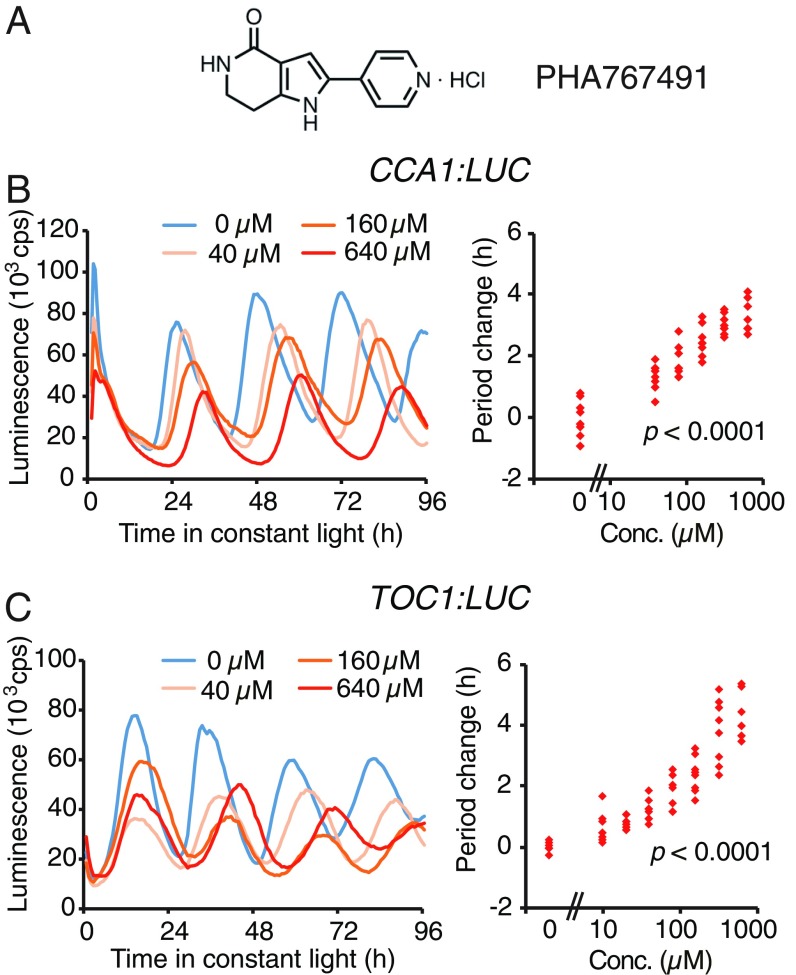Fig. 1.
The small molecule PHA767491 lengthens circadian period in Arabidopsis. (A) Chemical structure of PHA767491. Circadian luciferase reporter CCA1:LUC (B) and TOC1:LUC (C) activity in Arabidopsis with PHA767491 treatment. Representative traces (Left), and increases in period length relative to untreated (0 µM) control, indicate a dose–response (n = 8 for each concentration, with one-way ANOVA P values showing statistical significance of PHA767491-treated samples compared with untreated, Right).

